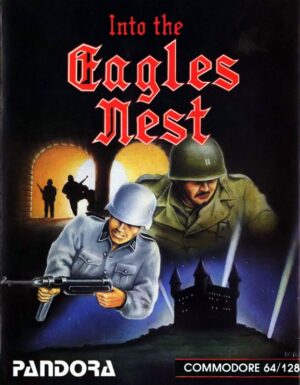Retro Replay Review
Gameplay
Decision in the Desert builds on the tactical foundation established in Crusade in Europe, offering a real-time wargaming experience with the option to pause and issue orders. The flow of battle is continuous, yet you can halt the action at any moment to reposition units, change attack priorities, or adjust supply lines. This hybrid approach rewards both quick thinking and careful planning, making each engagement feel dynamic without overwhelming newcomers.
(HEY YOU!! We hope you enjoy! We try not to run ads. So basically, this is a very expensive hobby running this site. Please consider joining us for updates, forums, and more. Network w/ us to make some cash or friends while retro gaming, and you can win some free retro games for posting. Okay, carry on 👍)
With five distinct scenarios—ranging from the early skirmishes around Tobruk to the climactic battles at El Alamein—players can tackle both historical set pieces and “what-if” variants. Each scenario contains multiple variants, such as altered force compositions or terrain changes, ensuring you’ll face fresh challenges every time you play. Adding to this depth, the game provides several difficulty levels that calibrate enemy AI aggressiveness and your own logistical constraints.
The user interface is straightforward: hex-based maps display unit icons, supply depots, and victory objectives. Commands are issued via keyboard shortcuts or simple menu selections, letting you focus on strategic decisions rather than wrestling with controls. Logistics matter here; maintaining supply lines through desert terrain is critical, and neglecting fuel or ammunition can turn a promising offensive into a desperate retreat.
Graphics
By mid-1980s standards, Decision in the Desert’s graphics are functional and clear, if not flashy. Terrain types—desert plains, ridges, and oases—are differentiated by distinct tile patterns, while unit counters use simple colors and shapes to indicate nationality and unit type. Though modern players may find the visuals rudimentary, they serve their purpose well and ensure that important information is always legible.
The animated elements are minimal: tanks and trucks slide across hexes with basic movement sprites, and small explosions mark combat engagements. There’s little fanfare, but this restrained presentation keeps your attention on strategic outcomes rather than on eye candy. Frame rates remain steady even in large-scale clashes, and the lack of visual clutter helps the game run smoothly on the typical hardware of its era.
Menus and overlays are presented in a utilitarian style, with clearly labeled options for issuing orders, reviewing unit status, and checking supply levels. Tooltips provide brief descriptions of unit strengths and weaknesses, so you never feel lost amid the desert sands. While there’s no soundtrack to speak of, the occasional beep or rumble when orders execute adds just enough audio feedback to keep the interface engaging.
Story
Decision in the Desert doesn’t feature a traditional narrative or cutscenes; instead, its story is embedded in the scenarios themselves. Each battle represents a pivotal moment in the North African campaign, from the early Italian offensives to the Allied counterattacks. Historical context is provided in scenario briefings, giving players insight into command challenges faced by Rommel and Montgomery alike.
Although the game lacks character-driven storytelling, it excels at conveying the ebb and flow of desert warfare. You’ll feel the frustration of stalled advances when sandstorms bog down your columns, and the rush of momentum when you break through enemy defenses. The tension of maintaining supply lines across vast, featureless expanses underscores the strategic gamble of mid-20th-century mechanized combat.
The inclusion of multiple scenario variants offers “alternate history” what-if situations—such as different reinforcement schedules or modified victory conditions—that let you explore how single decisions could have reshaped the campaign. This design choice underscores the game’s central theme: in the harsh desert environment, every tactical move can have far-reaching consequences.
Overall Experience
Decision in the Desert remains a compelling entry in the MicroProse catalog, showcasing the collaborative design talents of Sid Meier and Ed Bever. Its blend of real-time action and pause-based planning delivers a balanced challenge for both seasoned wargamers and curious strategy newcomers. You’ll appreciate the depth of its scenarios and the care taken to simulate desert logistics without bogging down the pace.
The game’s replay value is significant. With multiple scenarios, variants, and difficulty settings, you can spend dozens of hours refining your desert warfare tactics. Whether you aim to rewrite history with daring flanking maneuvers or strive for historically accurate outcomes, each playthrough brings new strategic puzzles to solve.
While modern audiences may find the graphics and sound simplistic, the core gameplay remains timeless. Decision in the Desert stands as both a historical artifact and a solid tactical wargame, offering players a window into the challenges of North African campaigns. If you’re drawn to thoughtful strategy, logistical planning, and the thrill of commanding armored divisions across sandy battlefields, this mid-1980s classic still has plenty to offer.
 Retro Replay Retro Replay gaming reviews, news, emulation, geek stuff and more!
Retro Replay Retro Replay gaming reviews, news, emulation, geek stuff and more!









Reviews
There are no reviews yet.